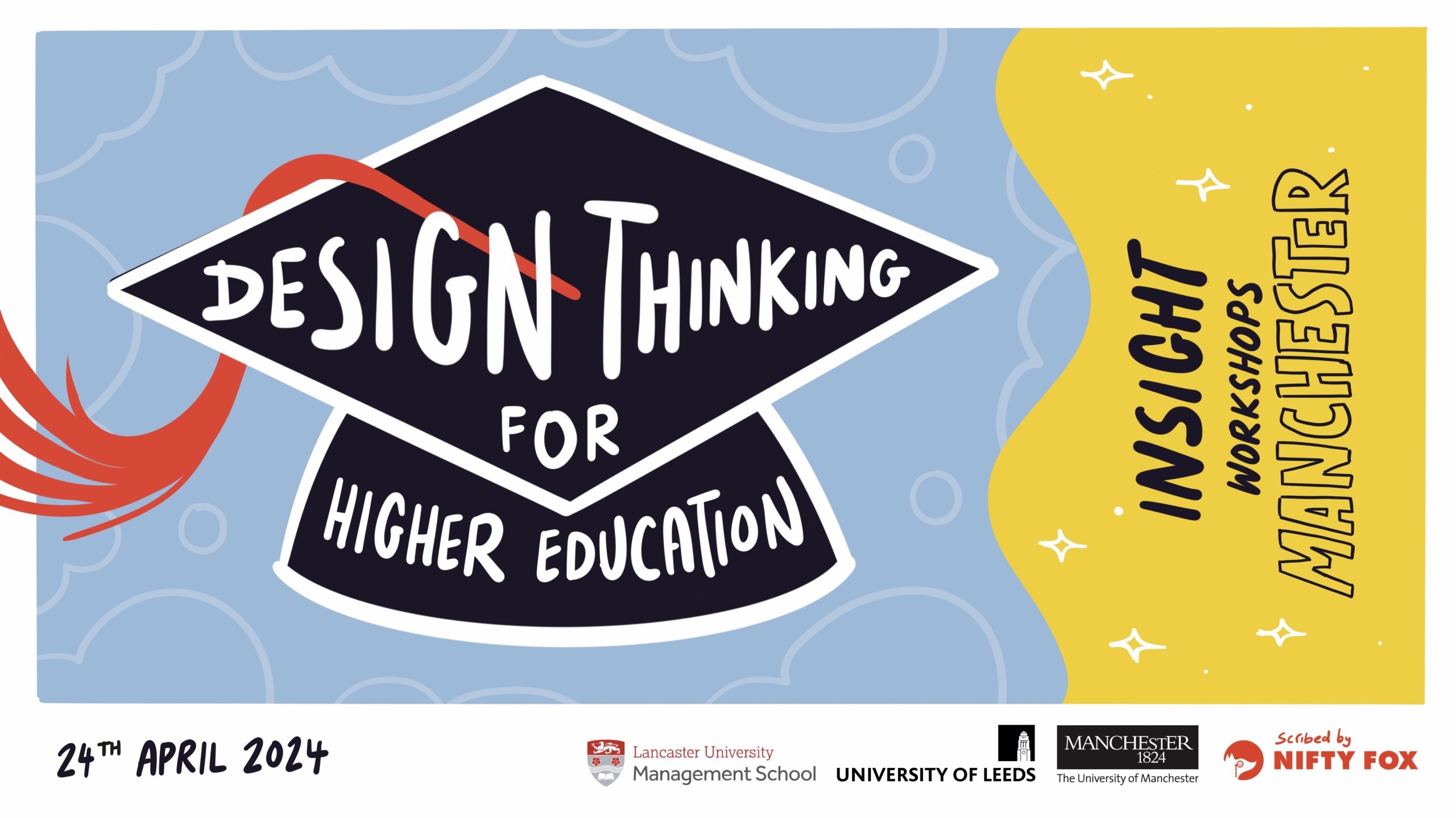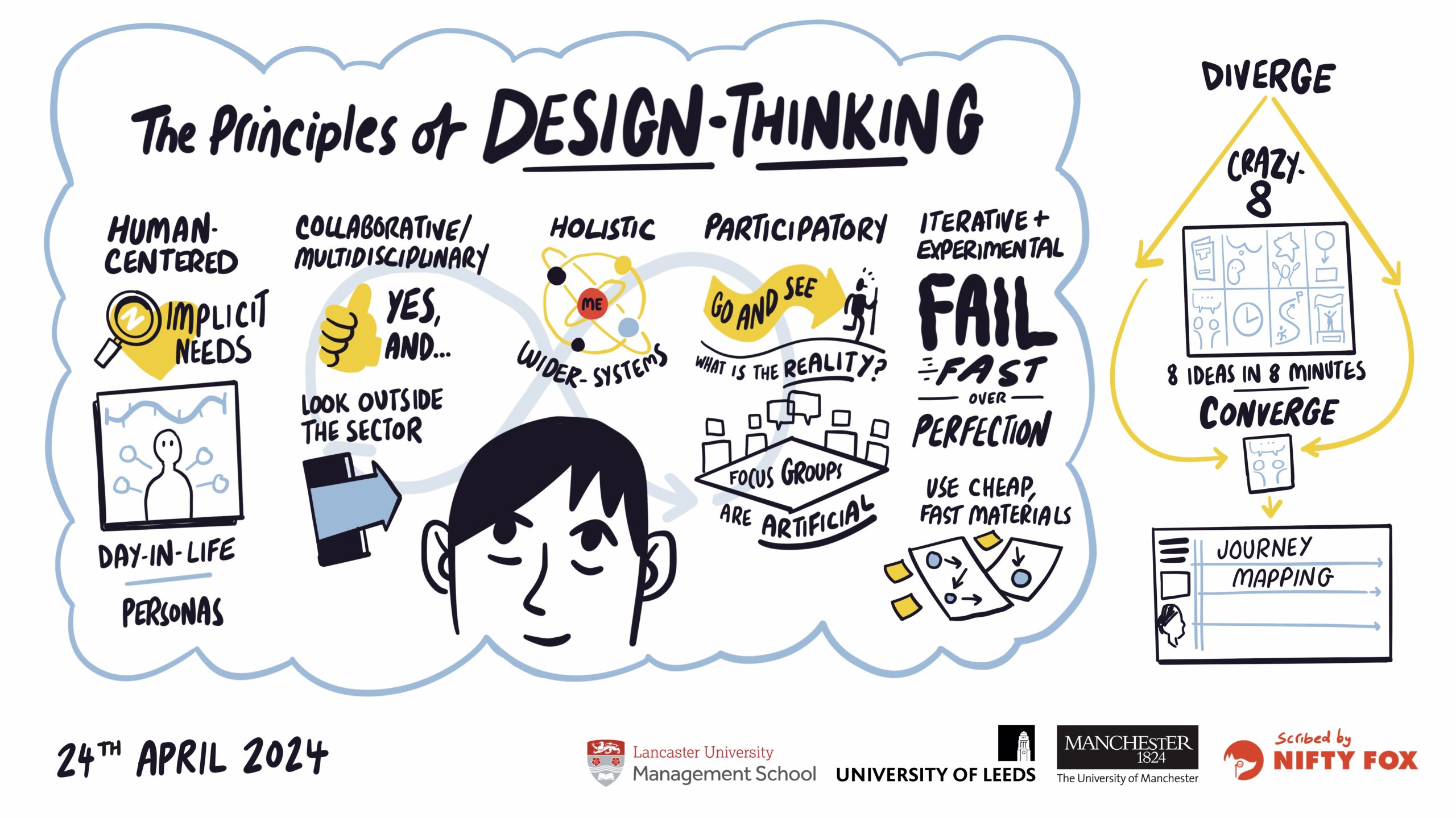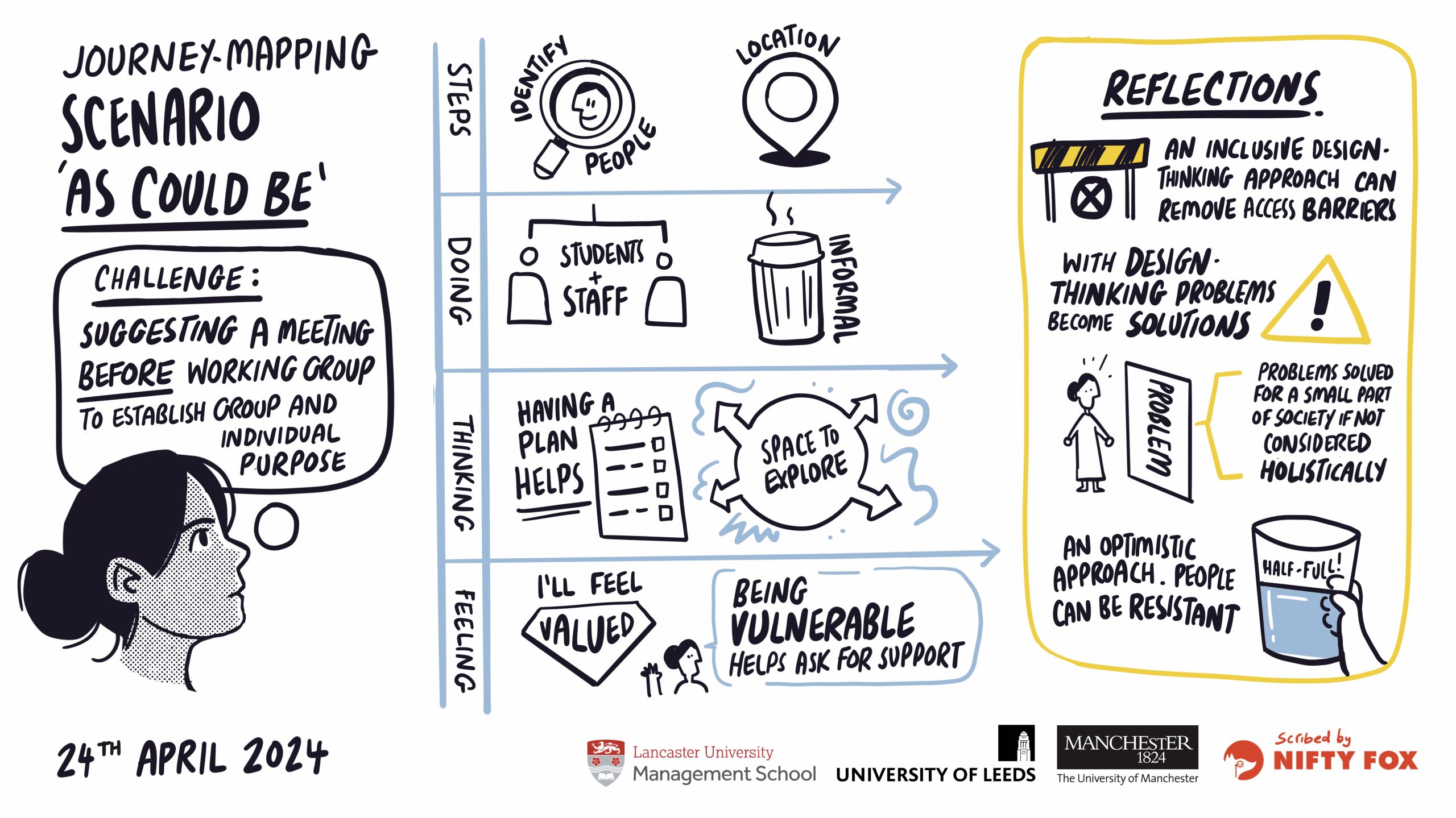Collaboratory 2: INSIGHT
24th April 2024, University of Manchester (36 colleagues from the HE sector and design organisations, some who had been at the first collaboratory and some joining us for the first time).
(all images in this section have been created by our project partner Nifty Fox during the second collboratory depicting our discussions and providing visual documentation of the participants input)
How did we get on?
 Objective: Introduce people-centred design, build empathy for the experience of working with the Professional Standards Framework and explore people-centred design as an approach to the framework.
Objective: Introduce people-centred design, build empathy for the experience of working with the Professional Standards Framework and explore people-centred design as an approach to the framework.
All images in this section have been created by our project partner Nifty Fox during the second collboratory depicting our discussions and providing visual documentation of the participants input.
What did we want insights about?
 Our educational journeys and experiences of the Professional Standards Framework:
Our educational journeys and experiences of the Professional Standards Framework: We wanted to test our understandings about interplay of Design Thinking (DT) and the Professional Standards Framework (PSF) that had emerged during the first collaboratory a month earlier. We also wanted to continue to use design thinking tools to work together. In this second workshop we continued to use the personas we had worked with in the first collaboratory- which created such identification and energy – and used journey mapping to structure our thinking and conversations.
 Journey-mapping Scenario ‘as is’:
Journey-mapping Scenario ‘as is’:Each participant created a journey map of their educational journey, charting highs and lows, which we shared with our neighbour and then added to a gallery. As one participant noted “journey mapping helps to identify emotional journey – (this is) helpful to develop self-awareness of a process.” Describing these maps, despite not knowing each other, conversation quickly focused the seminal experiences and values which motivate us professionally.We then heard some reflections on the insights and learning from the first collaboratory: That participants whose roles involve supporting others with fellowship are working through the emphasis on values in PSF 2023 and what V5, which has introduced collaboration, will mean in practice. We see opportunities for DT to support them because collaboration is so central to DT and well articulated with tools to support it. We also heard about the ways in which aligning DT and the PSF may be difficult. They are broadly used at different stages of a process and the openness of the PSF is both a huge strength and introduces a lot of different ’design’ contexts and examples which need to be considered.
We finally thought about our own experiences with the PSF. We identified challenges of working with the PSF and what we have gained in the process. It was wonderful to hear the value people had experienced through the process of reflection and the validation of their endeavours they had gained. Again, the issue of collaboration was touched on as people identified discomfort with the ‘extracting’ their personal contribution from work they had done with others.
 Principles of Design Thinking‘ and ‘as could be’ education practice:
Principles of Design Thinking‘ and ‘as could be’ education practice:We returned to the personas we had met in the first collaboratory and explored a scenario each may face in their work in HE. In groups we used the journey mapping tool to explore the steps they may take to complete their task. A journey map asks not only what someone is doing but what they are thinking and feeling. These aren’t common questions in HE. A participant noted that “it seems feeling overwhelmed was a common theme identified in several situations in HE !”. Unusually again in HE, we used role play to share our discussions with the wider group. A participant shared that “I really felt I learned / became aware about some of my own working habits (good and bad) by listening and contributing to the ‘role play’ scenarios. I had not really experienced this approach previously and found it a very interesting way to approach a problem. I am considering developing a student task to align with the use of an annotated journey map exercise. thanks for the ideas!!”.
 Scenario ‘as could be’:
Scenario ‘as could be’:A month earlier we had shared various DT frameworks with participants. We wanted to move beyond these and highlight the values or principles we see as informing DT. We characterised DT as: human-centred, collaborative and multidisciplinary; holistic; real and participatory; iterative and experimental.We then returned to the same scenarios we had been discussing and thought about these principles would change how they would be approached. The answers included more scope for open discussion based on interest and expertise rather than role, space to not know the answer and to learn, and the ability to challenge the original brief.